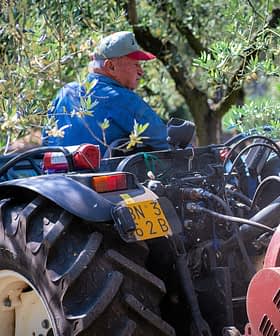Expanding Agriculture and Climate Change are Placing the World’s Endemic Species at Risk
A conservation group has warned that one-third of the species on its “survival watchlist” are now at high risk of extinction.
 The binturong, also known as bearcat, is native to South and Southeast Asia.
The binturong, also known as bearcat, is native to South and Southeast Asia. One of the world’s leading conservation groups has warned that 38,744 species on its “survival watchlist” have become at high risk of extinction.
The International Union for Conservation of Nature (IUCN) said at a conference earlier this month in Marseilles, France that despite some improvements in conservation efforts over recent years, the number of species at risk of extinction continues to grow.
Whether these past trends in habitat range losses will reverse, continue or accelerate will depend on future global carbon emissions and societal choices.
The group has identified 138,374 species on its “survival watchlist,” of which 28 percent have moved from being under threat of extinction to high risk of extinction.
See Also:Europe Announces Plan to Plant 3 Billion Trees by 2030Climate change and the degradation of natural environments are two main reasons for the growing threat to Earth’s biodiversity.
Of particular note, the IUCN warned that the komodo dragon, the world’s largest lizard, has moved into the high risk of extinction category.
“The idea that these prehistoric animals have moved one step closer to extinction due in part to climate change is terrifying – and a further clarion call for nature to be placed at the heart of all decision making on the eve of the COP26 in Glasgow,” Andrew Terry, a conservation director at the Zoological Society of London, told CNN.
The IUCN’s findings support the conclusions reached by a previous study published in the Nature Communications journal, which showed that deforestation and climate change are causing rapid destruction of natural habitats around the world and putting vulnerable species at risk.
The study found that the global demand for food has led to increased land use, which has, in turn, increased deforestation and the transformation of natural habitats into cultivated lands.
This transformation both increases greenhouse emissions and harms the natural cycles of ecosystems, negatively impacting all stages of animal life.
“Whether these past trends in habitat range losses will reverse, continue or accelerate will depend on future global carbon emissions and societal choices in the coming years and decades,” said Andrea Manica, the lead author of the study and zoology professor at the University of Cambridge.
In another study, recently published in the Biological Conversation journal, scientists demonstrated that changes in the planet’s temperature by more than 3 ºC could cause the extinction of half of endemic marine species and one-third of endemic species on land.
The synthesis study found that animals and plants living in one area are more likely to be affected by climate change compared to less specialized species.
However, invasive species are likely to face insignificant or no effects in the face of a warming climate. This might give invasive opportunists room to gradually push out endemic species leading to a decrease in biodiversity.
“We were really surprised at how much more we expect to lose with such little increases in average temperature,” one of the study’s authors told Carbon Brief. “Following the Paris Agreement [warming limits] would make a huge difference for our biodiversity worldwide.”








